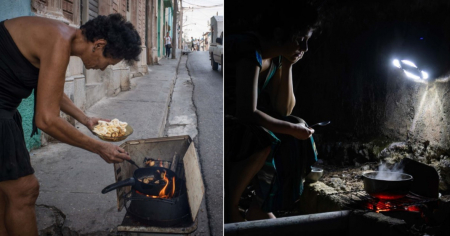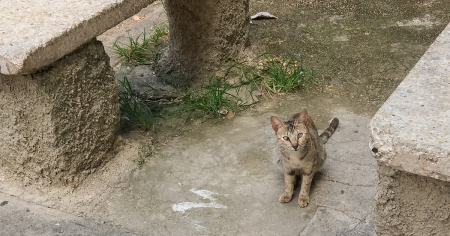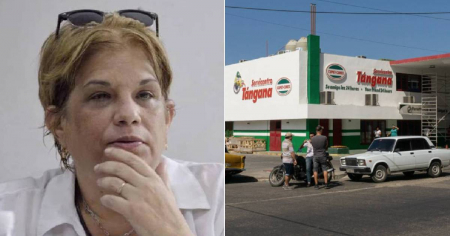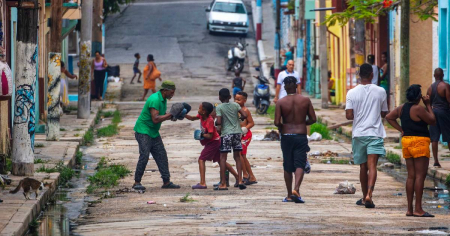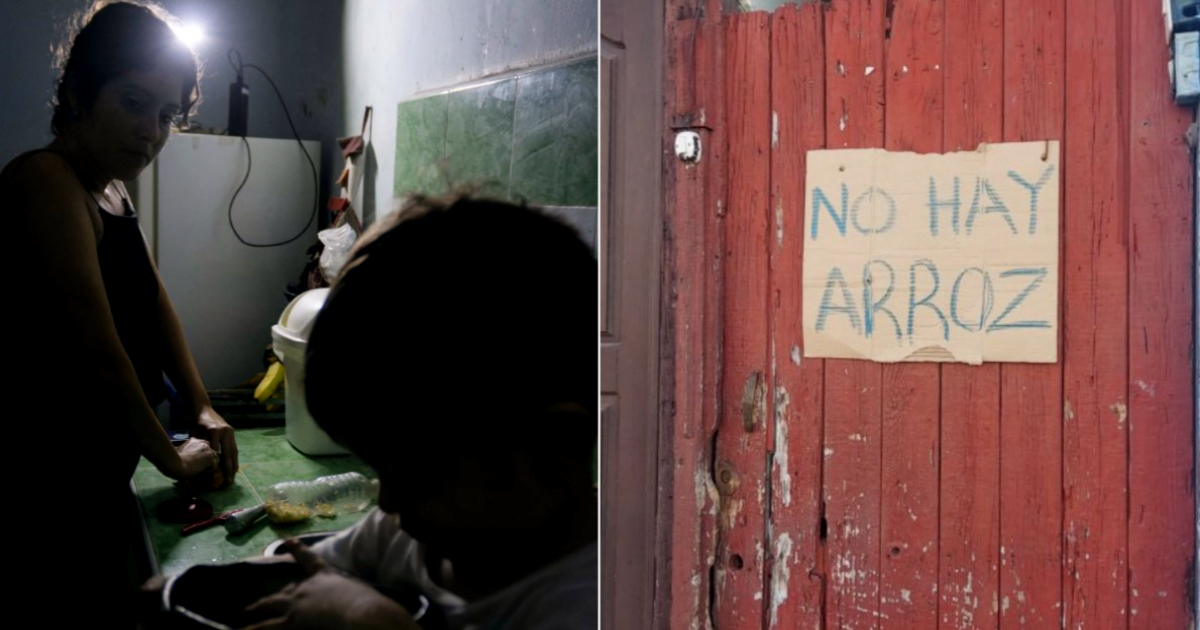
Related videos:
In an unusual narrative twist within Cuban state journalism, Periódico Girón, the organ of the Communist Party of Cuba (PCC) in Matanzas, published three reports that address the economic crisis from a human perspective, distancing itself from the usual ideological pamphlets.
Far from reiterating the official justifications for the U.S. embargo or glorifying the resilience of the people, these texts vividly portray the daily survival struggles on the island, focusing on ordinary Cubans and their hardships.

The articles titled ‘The Hardships of the Collector’, ‘The Makeshift Fire and a Plate of Cold Food’ and ‘What Happened to Us, the Ones at the Bottom?’, written by journalists Guillermo Carmona and José Alejandro Gómez Morales, represent a glimpse of openness within a media ecosystem controlled by the regime, where the official narrative often downplays the crisis or frames it within a rhetoric of resistance.
The hardships of the collector: The scarcity on the tables of Cubans
The first of these texts, "The T hardships of the Gatherer," is a stark account of the daily struggle to obtain food in Cuba.
Through the eyes of a son and his mother, the journalist describes the desperation over the imminent depletion of rice, an essential staple in the Cuban diet.
Unsuccessful calls to relatives and neighbors, trips to stores with no supplies, and the uncertainty of what can be eaten tomorrow shape the narrative of a country where food planning relies more on luck than on purchasing power.
More than just a simple chronicle, the text is a portrait of the widespread anguish experienced by Cuban families, who have become gatherers of the few products available in an increasingly unstable market.
With an almost literary tone, Carmona manages to convey the despair of someone who knows that their well-being does not depend on their effort or income, but on the erratic availability of basic goods.
Improvised fire and a cold plate of food: Cooking in the dark
The second article, 'The Makeshift Fire and a Cold Plate of Food', addresses another critical issue of the Cuban crisis: the instability of the electrical service and the lack of cooking fuels.
With blackouts lasting for hours and a growing shortage of liquefied gas, many Cubans have had to turn to coal or firewood to cook their food, as if it were a regression to pre-industrial times.
The text depicts everyday scenes of desperation: neighbors searching for coal in horse-drawn carts, families improvising cooking fires in their backyards, and the constant fear that a spark could turn into a fire.
The description of the act of cooking as an odyssey starkly reflects the precariousness that daily life on the island has fallen into. The photos accompanying this article objectively portray the sad reality of many Cuban families living in energy poverty.
The most striking aspect of the report is its critical tone, which implicitly highlights the State's inability to guarantee such a basic right as access to energy. Without directly mentioning Miguel Díaz-Canel or the government, the article outlines the structural failures that have forced Cubans to rely on improvised solutions to have hot meals.
What Happened to Us, the Ones at the Back?: The Nostalgia of a Lost Generation
The third report, 'What Happened to Us, the Ones from the Bottom?', is a nostalgic essay about the Cuban youth and their dislocation.
Through a series of rhetorical questions, the text recalls a generation that grew up among dreams, friendships, and little promises, but which today faces a reality that has stolen their hope.
The article not only evokes nostalgia for a youth that faded amid economic hardships and professional frustrations, but it also portrays the social decay of a Cuba where once secure paths—such as a university degree—no longer guarantee a decent life.
Without explicitly mentioning emigration, the text is a lament for the dispersion of a generation that has been forced to seek its future far from the island.
How far does the critique go in these articles?
While these reports represent an unusual step within official journalism, there is still a clear limit that is not crossed: the identification of the causes and those responsible for the crisis.
The texts starkly reveal the hardships of daily life in Cuba, but they avoid posing uncomfortable questions about the structural factors that have led the country to this point.
The food shortages, prolonged blackouts, and the despair of the youth manifest as established facts, without any inquiry into the government's failed economic policies, state corruption, or the administrative mismanagement that exacerbate these issues.
For example, in 'The Hardships of the Collector,' the story focuses on the anguish of a mother and her son searching for rice, but at no point is there any questioning of why national agricultural production is unable to meet the needs of the population or how bureaucracy and a lack of incentives affect food distribution. The problem is described, but those responsible are not identified.
In the makeshift fire and a plate of cold food, the energy crisis is brought to light, but the article does not mention the deterioration of the electrical infrastructure, the lack of efficient investments, or the poor management of state resources.
There is also no mention of the corruption that has impacted the purchase of fuel abroad, nor the failed energy policies that have left the country in this situation.
Finally, in What Happened to Us, Those at the Bottom?, the loss of direction of a generation is presented, but it does not analyze how government policies have pushed the youth towards emigration or disillusionment.
There is a sense of mourning for the fragmentation of the generation, but the regime's responsibility for the deterioration of living conditions and the limited opportunities for the future is not addressed.
A step forward or just a release?
These texts, while valuable for their human approach and distance from propaganda, still fail to cross the line into deep analysis and a denunciation of the true culprits of the crisis.
They are a sign that desperation has reached such a point that even the official press can no longer ignore it, but they do not yet represent critical journalism in the fullest sense.
In summary, Periódico Girón has allowed the publication of stories that reflect the pain of the Cuban people, but it still lacks the most important step: to point out that this crisis is not an inevitable phenomenon, but rather the result of failed political decisions and a governing model that, despite its constant calls for resistance, continues to demonstrate its inability to resolve the country's problems.
Filed under:

